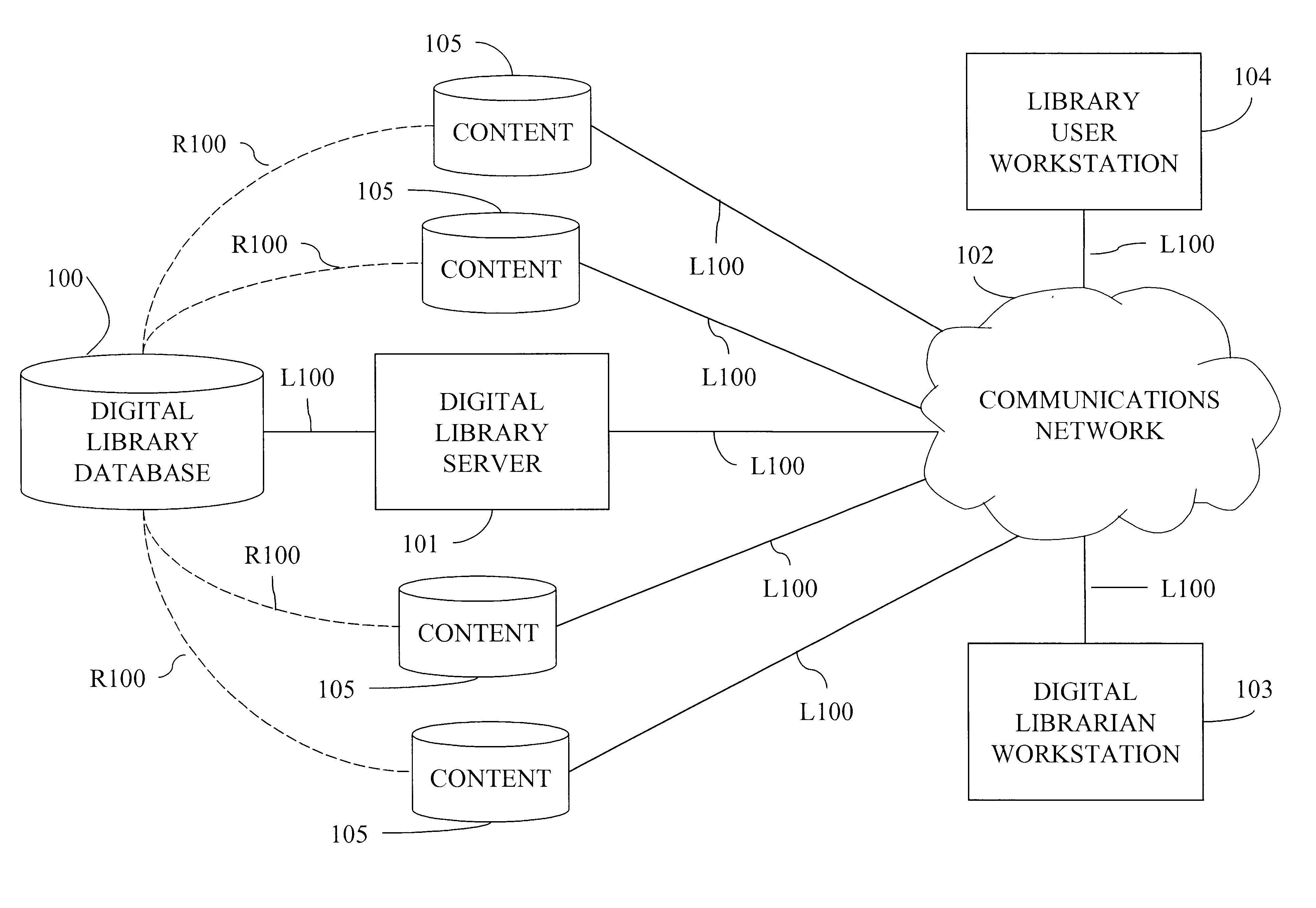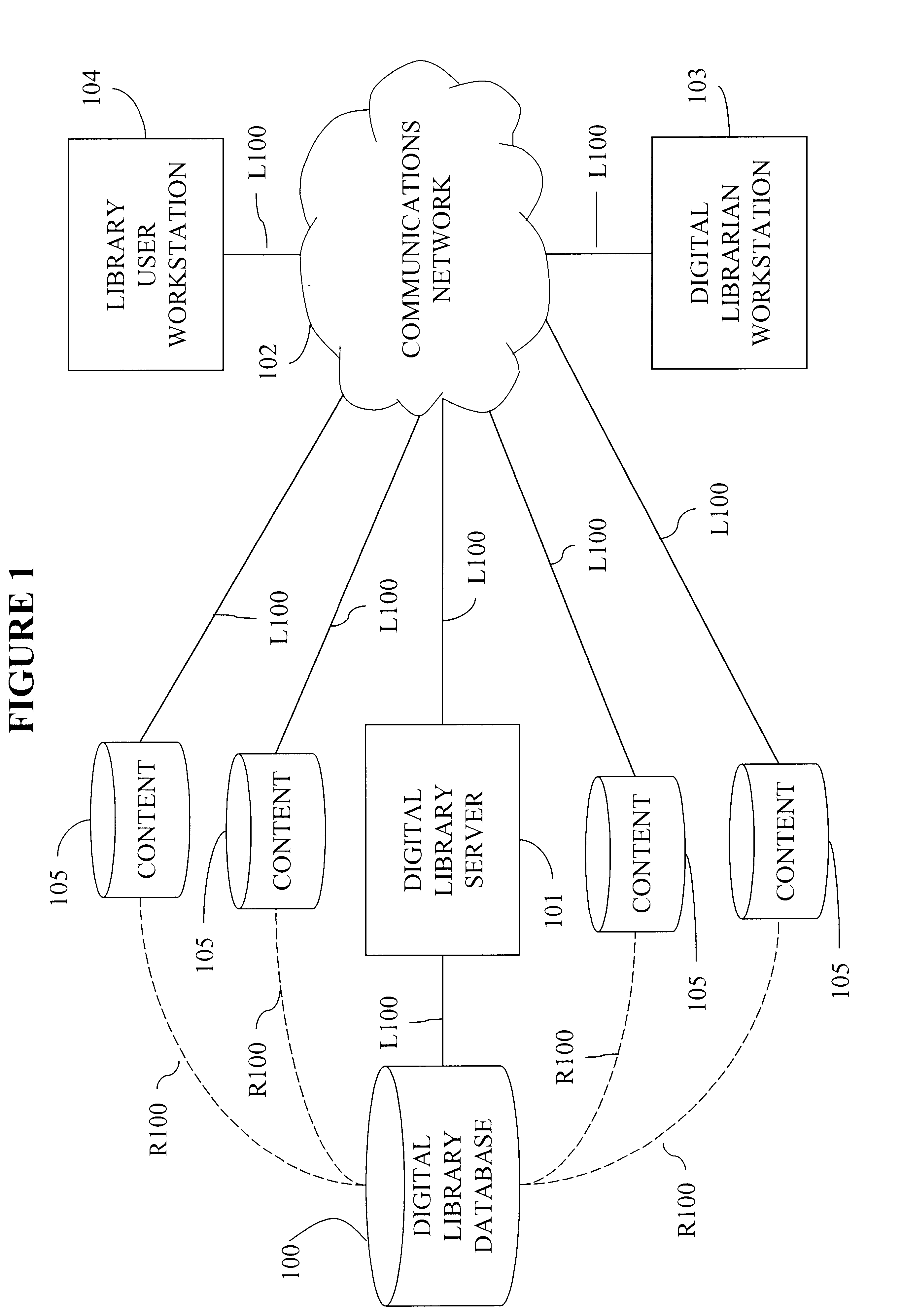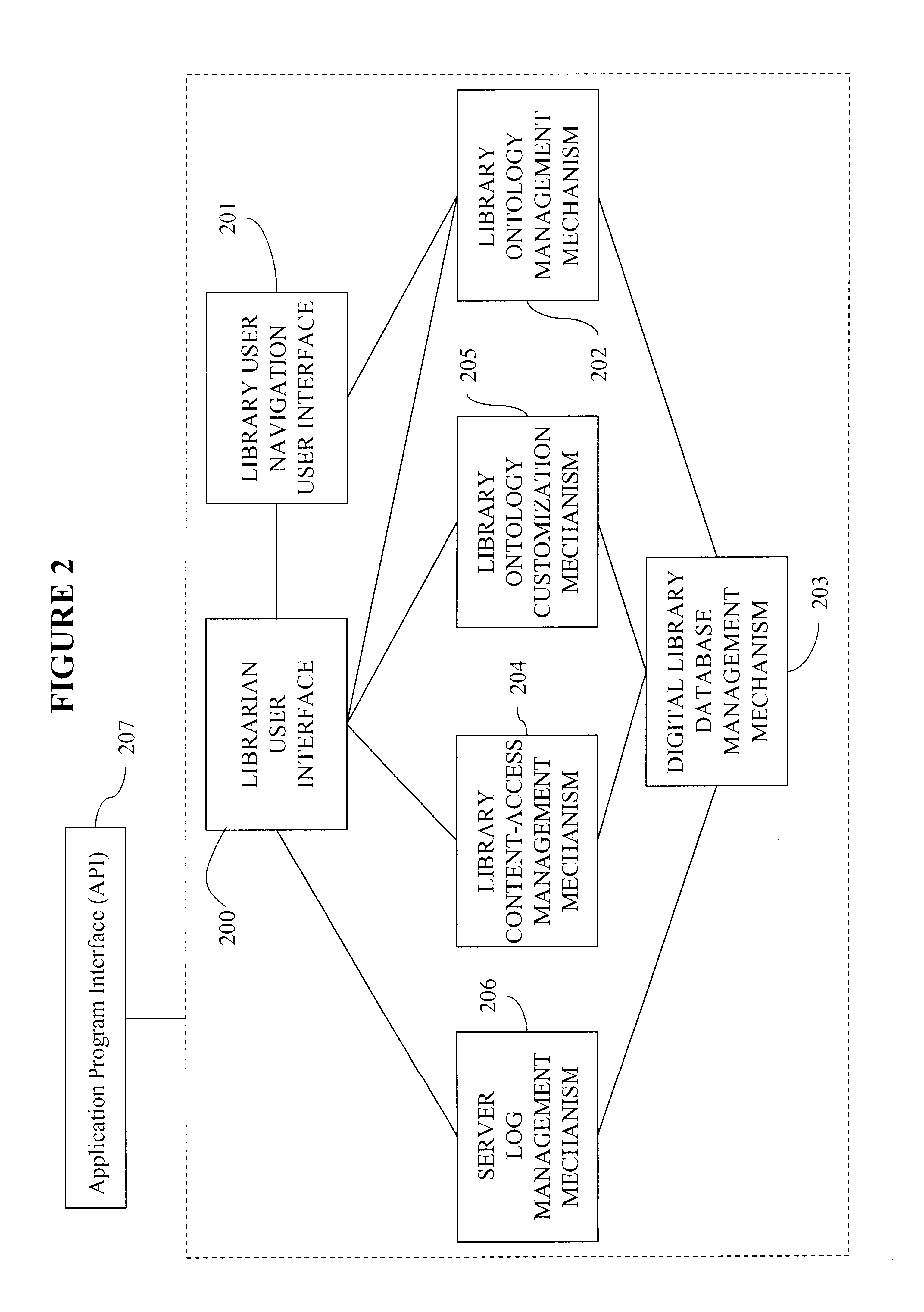System, method, and computer program product for managing access to and navigation through large-scale information spaces
a technology computer program products, applied in the field of systems, methods, computer program products for managing access to information spaces, can solve the problems of many professions becoming hamstrung, not practical for users to search and assess the quality of all, and the amount of information that has become available is so large, so as to facilitate the addition of resources to the information space, easy to catalogue
- Summary
- Abstract
- Description
- Claims
- Application Information
AI Technical Summary
Benefits of technology
Problems solved by technology
Method used
Image
Examples
Embodiment Construction
.”
BRIEF DESCRIPTION OF THE DRAWINGS
A more complete appreciation of the present invention, and many of the attendant advantages thereof, will be readily obtained as the same becomes better understood by reference to the following detailed description when considered in connection with the accompanying drawings, wherein:
FIG. 1 is a block diagram showing an overall system configuration for one embodiment of the present invention;
FIG. 2 is a block diagram showing mechanisms of a digital librarian workstation, a library user workstation and a digital library server shown in FIG. 1;
FIG. 3 is a block diagram showing the interrelationship between the global union digital library, local union digital libraries, local specialized digital libraries, personal information spaces, and collegial views in one embodiment of the present invention;
FIG. 4 shows an exemplary hierarchical representation of the specialization of a local union digital library in one embodiment of the present invention;
FIG....
PUM
 Login to View More
Login to View More Abstract
Description
Claims
Application Information
 Login to View More
Login to View More - R&D
- Intellectual Property
- Life Sciences
- Materials
- Tech Scout
- Unparalleled Data Quality
- Higher Quality Content
- 60% Fewer Hallucinations
Browse by: Latest US Patents, China's latest patents, Technical Efficacy Thesaurus, Application Domain, Technology Topic, Popular Technical Reports.
© 2025 PatSnap. All rights reserved.Legal|Privacy policy|Modern Slavery Act Transparency Statement|Sitemap|About US| Contact US: help@patsnap.com



